With these sorting activities for preschoolers, teaching children to compare and sort has never been so easy. This is THE post to help your preschooler master comparing, ordering, and sorting. You’ll learn why these skills are important and how to teach them. Help your preschoolers quickly master this skill of observing, comparing, and grouping … all on their own!
This is your ultimate guide to becoming a successful parent-teacher in teaching comparing and sorting to your preschooler.
What You Need to Know about Teaching Children to Sort and Compare
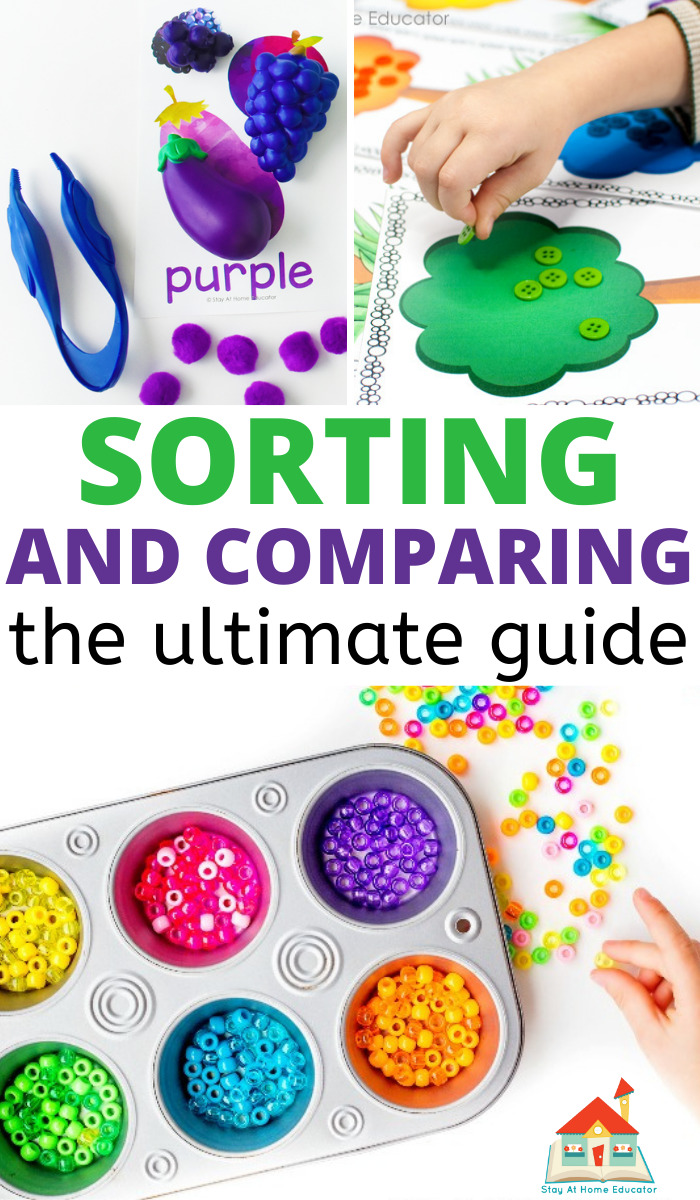
Believe it or not, sorting skills start developing in infancy.
A baby cries or laughs, which elicits a reaction from her parents, and she immediately starts learning which are the most effective in getting what she wants. She quickly learns how to organize those responses and begins to make sense of her world.
Children continue sorting and classifying by organizing their understanding of language, people, and objects in their environment. This helps them construct an understanding of how the different parts of their environment relate to themselves and to each other.
Simply put, they are identifying similarities and differences. This process is a child’s first steps in the math activities of matching, sorting and classifying.
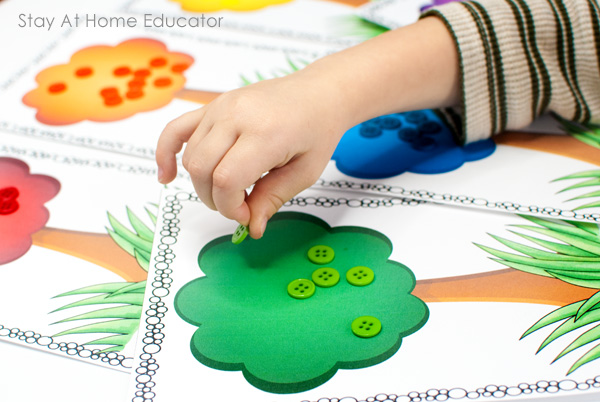
What is sorting and comparing for preschoolers?
Sorting is the ability to identify similarities and differences among a set of objects and to group and name them accordingly. This kind of organization is prominent in an assortment of disciplines, including math, science, and music.
Sorting is systematic. It’s ordering. It’s comparing and contrasting. Sorting is matching, and it’s also the very most basic form of algebra.
Sorting Skills for Preschoolers Include
- sorting by color
- matching
- comparing
- ordering
- classifying
- sorting by size
- sorting by shapes
As with all other strands of mathematics, the study of comparing and sorting provides a foundation for more advanced algebra concepts that will be explored in later years.
-
Product on sale
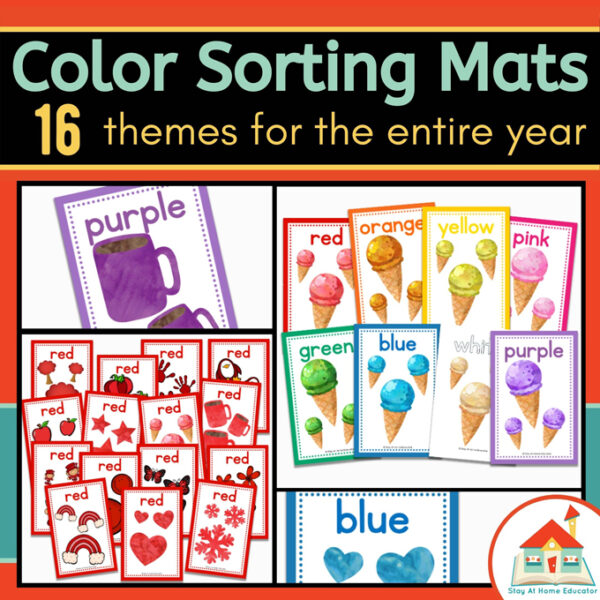 Color Sorting Mats for the Entire YearOriginal price was: $16.00.$8.00Current price is: $8.00.
Color Sorting Mats for the Entire YearOriginal price was: $16.00.$8.00Current price is: $8.00. -
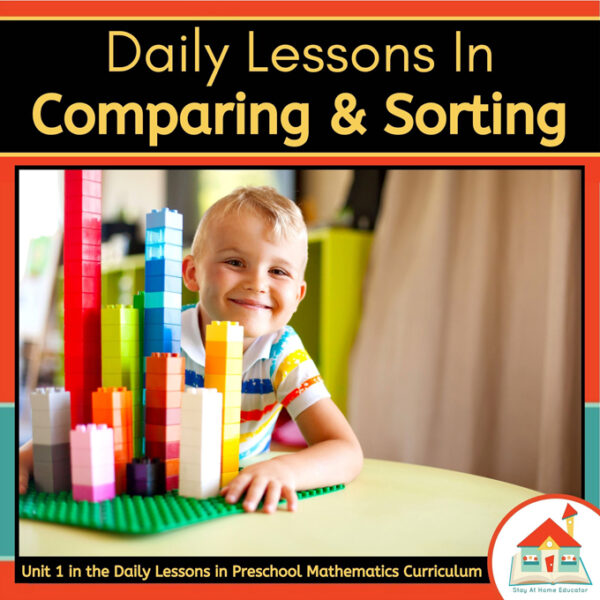 Daily Lessons in Sorting Preschool Math Unit$16.00
Daily Lessons in Sorting Preschool Math Unit$16.00
Benefits of Sorting Activities for Preschool
Sorting helps young children make observations about how things are alike and different — which are two essential early literacy and math skills.
As adults, we sort things all day every day. We sort our laundry by color before washing. We wear matching shoes that have probably been placed in pairs in the closet. And separate our silverware in a special organizer in the drawer.
One of the most important skills that children will ever learn is how to process information. Sorting can help them with this essential ability. It will help grades in school, but more importantly, it develops critical executive function skills which are necessary for life after school!
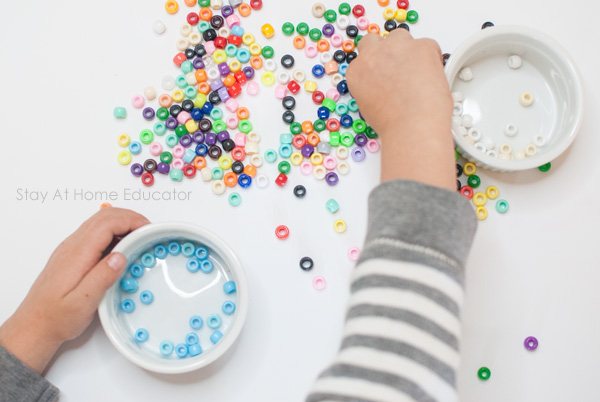
Must-Know Tips for Teaching Sorting
Michigan State University Extension says that, in general, the process of sorting involves three steps:
- Children decide which characteristic to sort by.
- Children should physically sort the objects. (No worksheets here!)
- They will be able to describe their rationale for sorting.
Describing their rationale encourages children to think about other characteristics to sort by.
The Process of Learning to Sort
Naturally, when children explore their environment in early childhood they notice how things are alike and different. Your preschooler will notice when you get new glasses, or that you used the small plates at dinner rather than the big plates.
Start with These Sorting Activities for Preschoolers
Children begin to sort by characteristics that have meaning to them. To get the most out of preschool sorting activities and lesson plans, try teaching sorting skills in this order.
- color
- size
- shape
Most children being by matching concrete objects first, like blocks of the same color or buttons of the same shape, because developmentally it’s easier. Then they move to matching pictures or puzzle pieces. The child develops skills naturally, gradually progressing in difficulty.
Once a child is matching more than two objects, they are sorting. Sorting involves separating objects into groups according to their similarities, which means they are also noticing differences. It’s also sorting when your toddler or preschooler lines up all her ponies in a straight, clean line.
Eventually, they’ll move on to sorting more abstract concepts like texture and sound. Additionally, once children master two sorting concepts from the above list, you can challenge them further by inviting preschoolers to sort by two or more attributes.
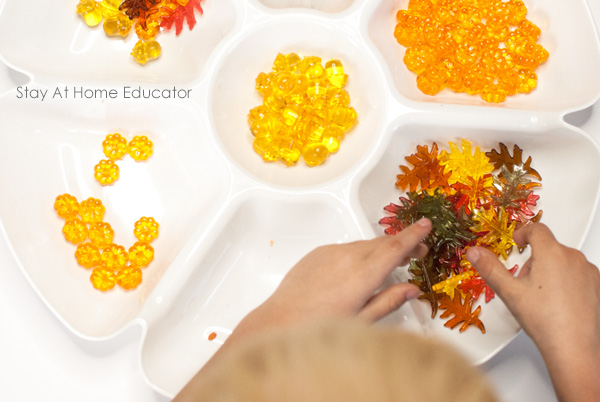
-
Product on sale
 Color Sorting Mats for the Entire YearOriginal price was: $16.00.$8.00Current price is: $8.00.
Color Sorting Mats for the Entire YearOriginal price was: $16.00.$8.00Current price is: $8.00. -
 Daily Lessons in Sorting Preschool Math Unit$16.00
Daily Lessons in Sorting Preschool Math Unit$16.00
Children Have Their Own Ideas About Sorting
Children may have their own ideas of how objects are related. Not only is that okay, but it is also encouraged. Preschoolers benefit from their own sorting activities and defining the terms of their sorting.
For example, when asked to sort buttons into groups, a preschooler might put stars and hearts together because they both have points. Similarly, they might put circles, ovals, and hearts together because they all have “bendy parts”. Or they might sort them by comparing sizes, putting them in groups of big and small!
As long as the preschooler can explain her choices, this is absolutely okay because there is some serious critical thinking and problem solving going on!
These are important aspects of pre-k sorting activities. Use these opportunities to talk to your preschooler to toddler, and allow them to share ideas.
How Can I Challenge My Preschooler As They Sort and Compare?
Start by teaching colors to toddlers and preschoolers, and practice matching and sorting them. I have many color teaching printables and learning activities on my site, including many free resources – just use the search bar and look for “color sorting.”
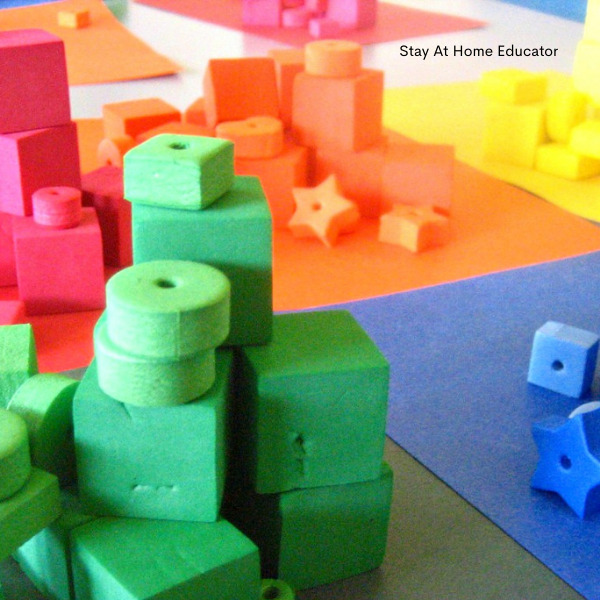
Once that is mastered, you can teach preschoolers how to sort animals (land versus water), clothing (summer versus winter), or toys (blocks versus legos).
After preschoolers master classifying by one attribute, they can certainly begin sorting by more than one attribute, such as pulling all the red hearts out of a button bin but leaving the red stars behind.
School or Home Sorting and Comparing Activities for Preschoolers
Sorting activities are most beneficial when they relate to everyday life so kids can see math in their everyday world. Color sorting preschool activities are some of the easiest to do!
You don’t need special classroom manipulatives to effectively teach sorting. In fact, there are many sorting and classifying activities for preschoolers you can do with items you have on hand!
Here are some other easy sorting activities that you can help your preschooler sort and compare with no prep at all! You can add these to any of your sorting preschool lesson plans.
- Putting away silverware
- Sorting laundry
- Putting away own laundry (sorting into appropriate drawers)
- Sorting groceries according to where they go (refrigerator, pantry, or cabinet)
- Putting away toys
- Sort mixed veggies (who says you can’t play with your food?)
- Pictures to be placed into a photo album (by event or topic)
- Sorting crayons by color or length
As children’s skills develop, so should the complexity of the sorting tasks. Be creative. You are not limited to color sorting activities!
The next time your child is helping you clean up toys, ask for all the toys with a specific attribute such as size, color, or shape. Then you can move onto objects of a certain kind or with a specific function, such as toys that make noise or that can be snuggled, stacked, or rolled. This has the potential to be a great indirect vocabulary lesson, too!
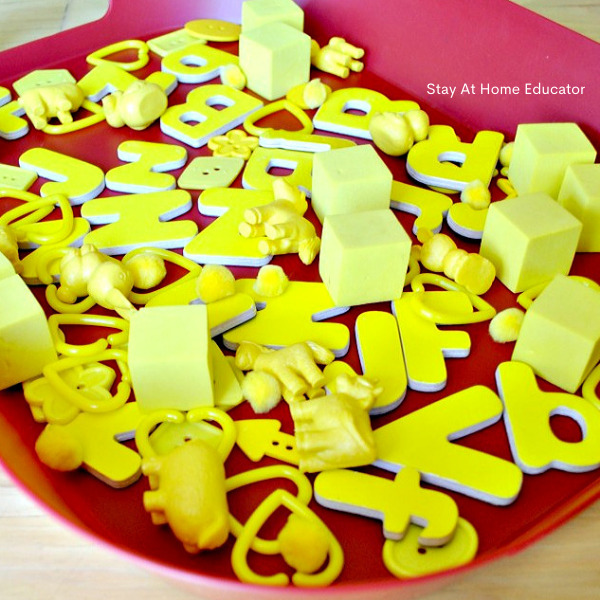
Use Picture Books to Teach Sorting, too!
You can never have too many picture books in a preschool classroom or home!! They can be used to teach or reinforce basically any skills, including sorting and comparing! Here are some of our favorites.
Get The Daily Lessons in the Comparing and Sorting Preschool Unit
Remove any overwhelm from teaching comparing and sorting to preschoolers by following these easy, step-by-step sorting lesson plans. You’ll get four weeks of daily sorting lessons to do with your preschooler, plus bonus activities, teaching tips, literacy integration activities, and even weekly printable preschool centers.
This unit is systematic, which means the skills progress in a way that is developmentally appropriate for preschoolers. And, everything is hands-on and fun! Comparing & Sorting Preschool Math Unit includes everything you need to teach sorting differentiation skills to your preschooler.
FREE SORTING ACTIVITIES FOR PRESCHOOLERS
Sorting and Comparing Supplies
It can be very helpful to have a variety of materials to work with when teaching comparing and sorting! These can be used with color sorting mats and many other sorting activities. Here are some of our favorites.
The Secrets of How to Teach Math to Preschoolers
Teaching math is an enormous task, and with the new changes in adopted state standards, the bar for teachers has risen even higher.
That’s because there is a lot that goes into teaching math.
It’s comprehensive and systematic. And graphing is only one piece of the puzzle.
Mathematicians indicate there are five disciplines of math (like mentioned above) that should be taught, which are as follows:
- number sense – the development of a deep understanding of numbers and the number system, to compose and decompose numbers and understand their various relationships
- algebra – the understanding of patterns and relationships, including sorting and categorizing
- geometry – the understanding of spatial relationships, prepositional terms, and the properties of two and three-dimensional shapes
- measurement – the ability to make comparisons and order, understanding measurable attributes
- data analysis and probability – (you are here) understanding data as a means of sharing organized information and understanding that certain variables affect data
Get Daily Lessons in Preschool Mathematics
Remember how I said that teaching math to preschoolers is systematic? That means you can’t put the cart before the horse. When it comes to teaching math, the skills need to be taught at the right time and in the right order.
Make teaching preschool math easy with done-for-you Daily Lessons in the Preschool Mathematics Curriculum.
-
Product on sale
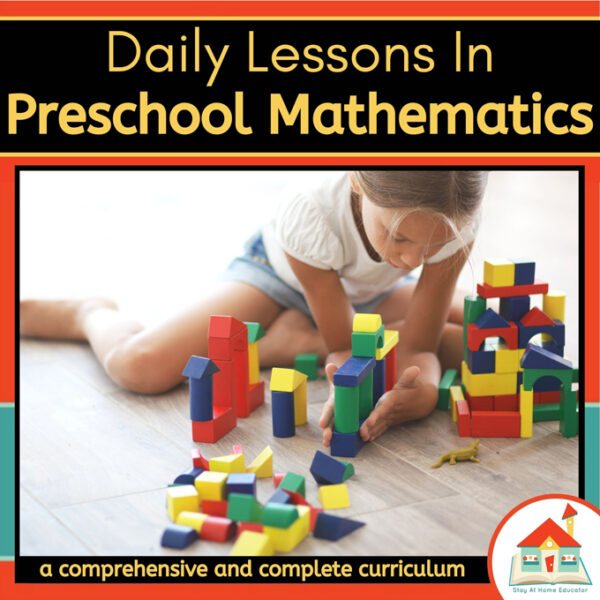 *** Daily Lessons in Preschool Mathematics CurriculumOriginal price was: $135.00.$99.00Current price is: $99.00.
*** Daily Lessons in Preschool Mathematics CurriculumOriginal price was: $135.00.$99.00Current price is: $99.00.

I’m Sarah, an educator turned stay-at-home-mama of five! I’m the owner and creator of Stay At Home Educator, a website about intentional teaching and purposeful learning in the early childhood years. I’ve taught a range of levels, from preschool to college and a little bit of everything in between. Right now my focus is teaching my children and running a preschool from my home. Credentials include: Bachelors in Art, Masters in Curriculum and Instruction.

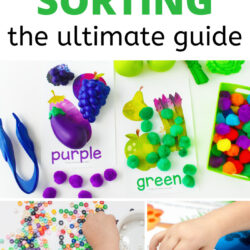
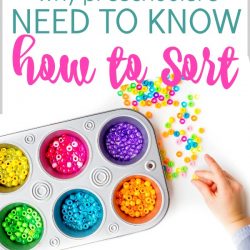
Great ideas for sorting activities! I featured your post at the Living Montessori Now Facebook page: http://www.facebook.com/LivingMontessoriNow